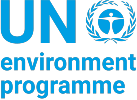Mercury is still used in a wide range of products and applications, including fluorescent lamps, batteries, dental amalgams, and scientific and medical instruments. All these products become waste in the end and since mercury cannot be decomposed, it remains in the environment. Mercury waste should, therefore, be managed in an environmentally sound manner pursuant to the Basel and Minamata conventions.
IETC's Activities on Mercury Waste Management
Since 2015, UNEP-IETC has been implementing a global mercury waste project funded by the Japanese government. The project focuses on providing technical and political support to the Parties to the Minamata Convention and others towards the implementation of the environmentally sound management of mercury waste.
-
Global Mercury Waste Assessment 2017 (Full Report: Arabic Chinese English French Russian Spanish)
-
Training Course on Environmentally Sound Management of Mercury Waste

-
Meeting of the Group of Technical Experts on Waste Thresholds to be Established Pursuant to Paragraph 2 of Article 11 Minamata Convention on Mercury, 27-29 May 2019, Osaka, Japan
-
Workshop on Synergies in Mercury Waste Management, 30-31 May 2019, Osaka, Japan

Minamata Convention
The Minamata Convention on Mercury is a global treaty to protect human health and the environment from the adverse effects of mercury.
UNEP-IETC had implemented the project on the Minamata Initial Assessment (MIA) to assist Cambodia, Pakistan, and the Philippines in ratifying and early implementing the Minamata Convention facilitating by the use of scientific and technical knowledge and tools on mercury management with national stakeholders. The Lessons Learned Workshop of the Minamata Initial Assessment Project in Asia was organized in May 2018 in Minamata, Japan.

The Convention draws attention to a global and ubiquitous metal that, while naturally occurring, has broad uses in everyday objects and is released to the atmosphere, soil, and water from a variety of sources. Controlling the anthropogenic releases of mercury throughout its lifecycle has been a key factor in shaping the obligations under the Convention.
Global Mercury Partnership
The overall goal of the UNEP Global Mercury Partnership is to protect human health and the global environment from the release of mercury and its compounds by minimizing and, where feasible, ultimately eliminating global, anthropogenic mercury releases to air, water and land. The Partnership works closely with stakeholders to assist in the timely ratification and effective implementation of the Minamata Convention on Mercury.
For more information, please contact:
Mr. Shunichi Honda
shunichi.honda[at]un.org






